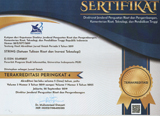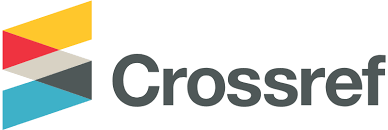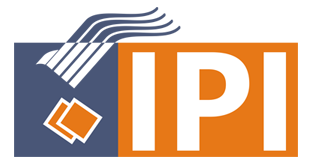Perancangan Aplikasi Sistem Penjualan pada LCB Cake & Beyond Menggunakan Metode Waterfall
(1) Universitas Singaperbangsa Karawang
(2) Universitas Singaperbangsa Karawang
(*) Corresponding Author
Abstract
In the ever-growing business world, effective and efficient data management is the key to success. Along with the need for automation and better data management, the implementation of database systems is a relevant solution. Database systems allow the storage, processing, and presentation of information in a structured and accurate manner, thus helping to improve operational efficiency and data accuracy. One of the challenges faced by many businesses, including LCB Cake & Beyond, is that the transaction process is still done manually. Conventional data recording is not only time-consuming, but also has a high risk of recording errors that can hinder operations and decision-making. Therefore, this research aims to design and implement a database application system to optimize the ordering process and store data management. The method used is waterfall with the help of Microsoft Access software. This system is designed to automate the process of data input, sales recording, and report generation quickly and accurately. The results showed that the database application developed was able to improve operational efficiency and minimize errors in the data management process, as well as provide convenience for users in accessing real-time information.
Keywords
Full Text:
PDFReferences
T. Ardiansah and D. Hidayatullah, “Penerapan Metode Waterfall Pada Aplikasi Reservasi Lapangan Futsal Berbasis Web,” J. Inf. Technol. Softw. Eng. Comput. Sci., vol. 1, no. 1, pp. 6–13, 2022, doi: 10.58602/itsecs.v1i1.8.
M. A. Fadillah and I. H. Ikasari, “Literature Review: Implementasi Perancangan Sistem Informasi Absensi Karyawan Berbasis Web Menggunakan Metode Waterfall,” JRIIN J. Ris. Inform. dan Inov., vol. 1, no. 3, pp. 577–581, 2023.
V. Febrian, M. R. Ramadhan, M. Faisal, and A. Saifudin, “Pengujian pada Aplikasi Penggajian Pegawai dengan menggunakan Metode Blackbox,” J. Inform. Univ. Pamulang, vol. 5, no. 1, p. 61, 2020, doi: 10.32493/informatika.v5i1.4340.
D. Handayani and M. Salam, “Aplikasi Sistem Informasi Simpan Pinjam Koperasi Berbasis Website Menggunakan Metode Waterfall,” KLIK Kaji. Ilm. Inform. dan Komput., vol. 3, no. 5, pp. 425–434, 2023.
M. Nurudin, W. Jayanti, R. D. Saputro, M. P. Saputra, and Y. Yulianti, “Pengujian Black Box pada Aplikasi Penjualan Berbasis Web Menggunakan Teknik Boundary Value Analysis,” J. Inform. Univ. Pamulang, vol. 4, no. 4, pp. 143–148, 2019.
A. Prasetyo, I. S. Hasanah, and F. Amalia, “Perancangan Aplikasi Sistem Penjualan Berbasis Microsoft Access Pada Distributor Mutiara Cosmetic,” Innovative: Journal Of Social Science Research, vol. 4, no 4, pp. 6043–6060, 2024.
H. Kurniawan, W. Apriliah, I. Kurnia, and D. Firmansyah, “Penerapan Metode Waterfall Dalam Perancangan Sistem Informasi Penggajian Pada Smk Bina Karya Karawang,” J. Interkom J. Publ. Ilm. Bid. Teknol. Inf. dan Komun., vol. 14, no. 4, pp. 13–23, 2021, doi: 10.35969/interkom.v14i4.78.
M. Badrul, “Penerapan Metode waterfall untuk Perancangan Sistem Informasi Inventory Pada Toko Keramik Bintang Terang,” PROSISKO J. Pengemb. Ris. dan Obs. Sist. Komput., vol. 8, no. 2, pp. 57–52, 2021, doi: 10.30656/prosisko.v8i2.3852.
H. Surijadi and Y. Idris, “Dampak Lingkungan Kerja Fisik dan Lingkungan Kerja Non Fisik Terhadap Kepuasan Kerja Karyawan,” Public Policy, vol. 1, no. 1, pp. 14–32, 2020.
W. Harjono and Kristianus Jago Tute, “Perancangan Sistem Informasi Perpustakaan Berbasis Web Menggunakkan Metode Waterfall,” SATESI J. Sains Teknol. dan Sist. Inf., vol. 2, no. 1, pp. 47–51, 2022, doi: 10.54259/satesi.v2i1.773.
S. Supriyanta, D. Supriadi, and B. Susanto, “Perancangan Sistem Informasi Penggajian Karyawan Dengan metode Waterfall,” Indones. J. Comput. Sci., vol. 1, no. 1, pp. 1–6, 2022, doi: 10.31294/ijcs.v1i1.1040.
W. Wiyanto, A. Fauzi, I. A. Ghopar, and S. B. Raharjo, “STRING (Satuan Tulisan Riset dan Inovasi Teknologi) Implementasi E-Government Pada Pemerintah Desa Berbasis Android dengan Metode Waterfall,” vol. 8, no. 2, pp. 164–172, 2023.
R. D. Rusdiyan Yusron and M. M. Huda, “Analisis Perancangan Sistem Informasi Perpustakaan Menggunakan Model Waterfall Dalam Peningkatan Inovasi Teknologi,” J. Autom. Comput. Inf. Syst., vol. 1, no. 1, pp. 26–36, 2021, doi: 10.47134/jacis.v1i1.4.
K. H. Nisa and N. S. Muntiah, “Analisis dan Perancangan Sistem Informasi Akuntansi Berbasis Microsoft Access 2019 pada Persediaan Barang di UD. Maju Mapan Pacitan,” Transekonomika Akuntansi, Bisnis Dan Keuang., vol. 4, no. 4, pp. 482–496, 2024.
N. Hidayati, “Penggunaan Metode Waterfall Dalam Rancang Bangun Sistem Informasi Penjualan,” Gener. J., vol. 3, no. 1, pp. 1–10, 2019, [Online]. Available: https://ojs.unpkediri.ac.id/index.php/gj/article/view/12642.
DOI: http://dx.doi.org/10.30998/string.v10i1.27612
Refbacks
- There are currently no refbacks.
Copyright (c) 2025 Fredy Kurnia Sandy, Sukanta Sukanta

This work is licensed under a Creative Commons Attribution 4.0 International License.
STRING (Satuan Tulisan Riset dan Inovasi Teknologi) indexed by:

Ciptaan disebarluaskan di bawah Lisensi Creative Commons Atribusi 4.0 Internasional.
View My Stats


 Sertifikat Akreditasi
Sertifikat Akreditasi
















